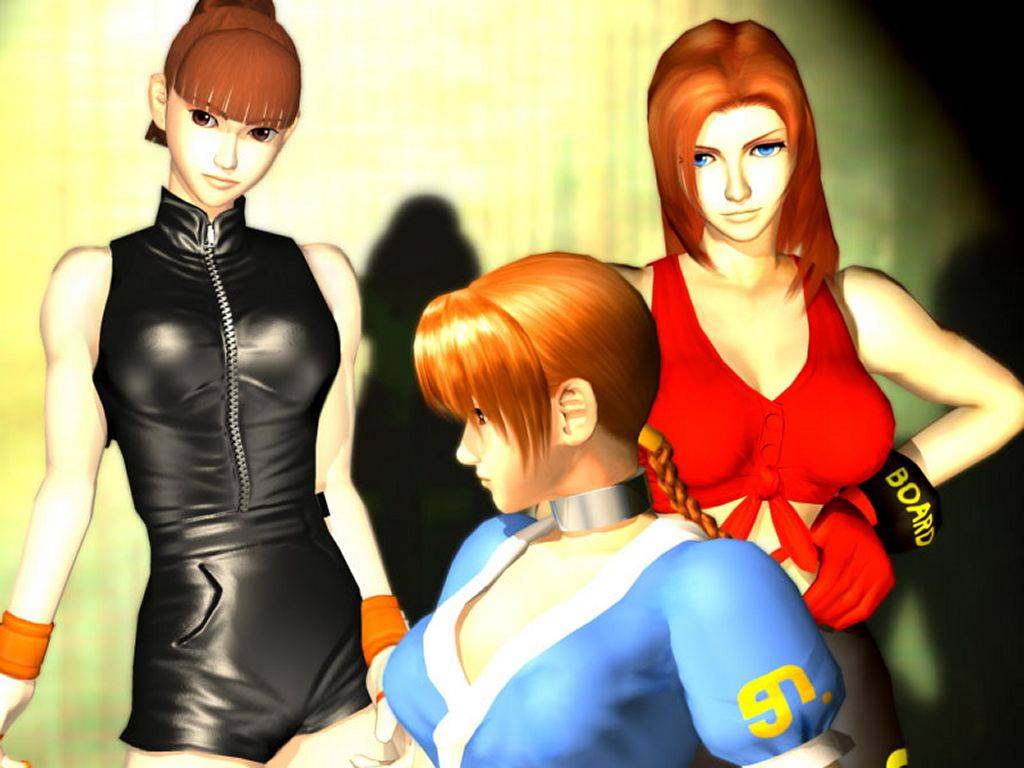There’s no shortage of violent conflict in video games, and misplaced titillation is also offered in abundance, but few franchises wear the combination of martial entertainment mind candy and Barbie beauty standard eye candy on their sleeves as openly and unapologetically as Dead or Alive. Series creator Tomonobu Itagaki himself stated in a Japanese interview: “The fighting makes only 50% of the DOA series. The other 50% is pure entertainment.”
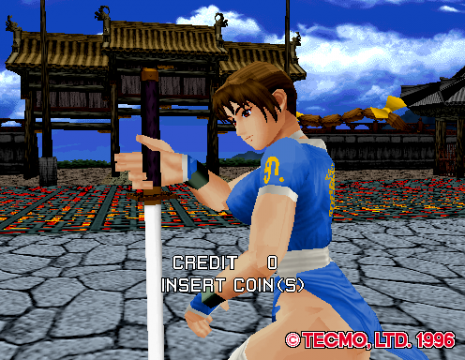
Arcade
Introduced in 1996, Tecmo’s new fighter looked to be little more than a Virtua Fighter clone – which made sense, given that it ran on the same hardware. Maybe fearing that it would get lost in the crowd, the Dead or Alive crew (later named Team Ninja) decided that they weren’t just going to add a little bit of sexiness, they were going to make sure people would take notice. All of the female characters were extremely well endowed – not new by any video game practice, but rarely before so much care has been taken into the modelling and animation of female breasts. It was as if the game took place in some male fantasy universe where gravity followed only the law of titillation. And the characters wore an assortment of flesh- and panty-baring outfits, which got increasingly fetishy as the series went on.
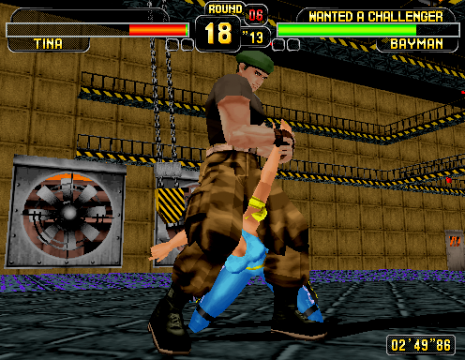
Arcade
You’d think that this was just a ploy from Tecmo, yet another attempt to use beautiful women to sell garbage, the gaming equivalent of a Girls Gone Wild video (the actual attempt at that kind of skulduggery, The Guy Game, happens to be one of the worst games of all time.) It’s easy to walk away thinking that Dead or Alive is just another cheesecake fest. It’s clear that Tecmo thinks the same way – just take a look at the advertisement for Xtreme Beach Volleyball below, or the infamous “she kicks high” commercial for Dead or Alive 3 (where a bunch of slack-jawed weenies ogle the game in motion.) And, quite honestly, it’s unquestionably one of the major reasons behind the game’s popularity, as the overall character designs usually were the best looking of any fighting game on the market.
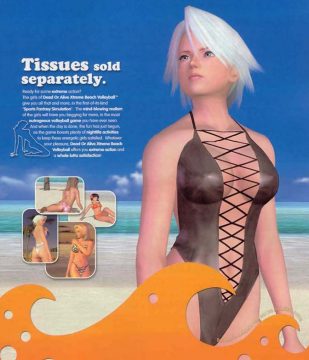
But somehow, against all odds, the game turned out to be good. Not just vaguely good, but the kind of good that eventually made Dead or Alive known as one of the best 3D fighting game franchises out there. Look beyond the obvious pandering, and there’s an exciting, fast paced game underneath. While it may lack the more technical fighting system of Virtua Fighter or the colorful cast of Soul Calibur and Tekken, it more than makes up for it with blazing ferocity. The Xtreme spin-offs, however drop even the last shred of pretense the main series maintained, and are little more than light dating sims with a bunch of mini games thrown in.
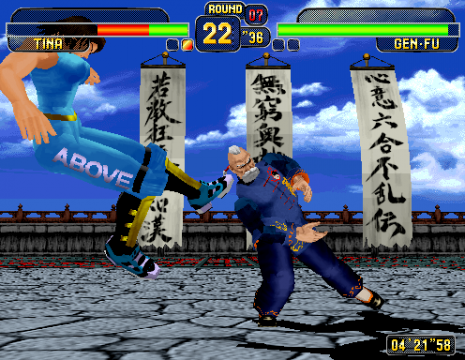
Arcade
The fighting is similar to Virtua Fighter, if it were given a swift kick in the ass and at least a fair amount of caffeinated sugar. Using only a punch, kick and block button and various combinations of the directional pad, you can execute tons of moves that all flowed smoothly into each other. Everything moves with incredible speed while still maintaining most of the depth of other 3D fighters. Still, the speed and ease of which you can execute most moves means that Dead or Alive is a rather beginner-friendly game, much to the annoyance of hardcore fighting freaks worldwide.
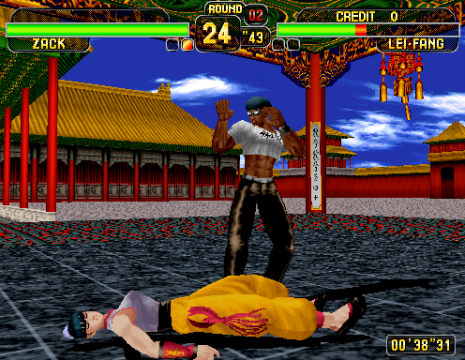
Arcade
The biggest and probably most controversial change to the formula was the addition of a universal counter system. If you time it right, you can catch your opponent’s attack and either toss them aside or use their momentum to cause extra damage. It’s great for those with lightning quick reflexes, as they’re tough enough to execute so you’re not entirely invincible. But it cheapens play against the CPU characters, who can counter your attacks precisely to your utter annoyance.
Tomonobu Itagaki
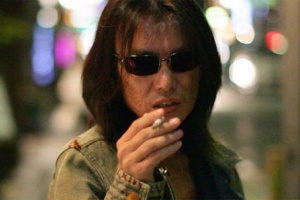
Like most fighting games, the Dead or Alive series revolves around a fighting tournament of the same name, which of course is a front for dubious elements within the mega corporation DOATEC. The elusive villain Donovan carries out experiments with some of the combatants in order to create the ultimate fighter, which usually result in the games’ bosses and/or various clones of Kasumi. In terms of story involvement, it oscillates somewhere in between Virtua Fighter and Tekken. In early installments, there are only short bits of text or a few cryptic cutscenes to relate to the ongoing events, but this is expanded more and more as the series goes on.
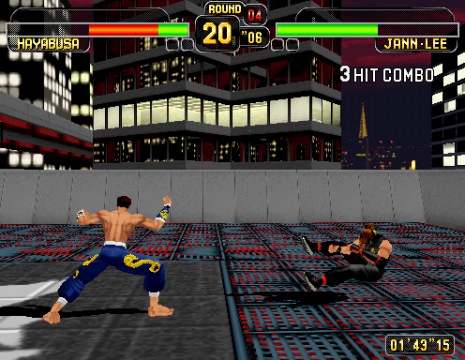
Arcade
Dead or Alive started using Sega’s Model 2 arcade hardware, and the first game was eventually ported to the Saturn and PlayStation (and back to PlayStation-related arcade hardware). Dead or Alive 2 has been ported to the Dreamcast, PlayStation 2 and Xbox, in several iterations. However, from Dead or Alive 3 onward, all titles have been at home on the Xbox, without even coming out in the arcades. Most Japanese developers have stayed away from Microsoft’s behemoth, mostly since it sold terribly in Japan. However, Team Ninja’s games, both the Dead or Alive games and Ninja Gaiden, are the best-selling games for the system over there. Only after series producer/director Tomonobu Itagaki’s leave from the company, the series went back multi platform.
Characters
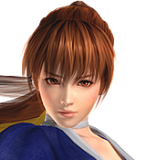
Kasumi
The doe-eyed “star” of the series introduced in the first game, Kasumi is a runaway ninja who practices Mugen-Tenshin Ninjutsu, which is Team Ninja’s name for any crazy stuff they want to come up with. She’s 17, although the American games list her age as “unknown”.
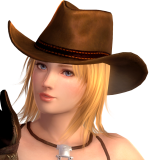
Tina Armstrong
A ridiculously successful wrestler from Texas who pursues a new showbiz career with almost every series entry. First she desires to become a movie star, then a fashion model, a rock musician and finally a governor (so, still showbiz). Starts off a brunette in the original Dead or Alive, but turns bottle blond in the later games.
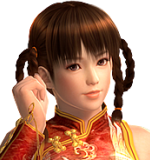
Lei Fang
The Chinese girl with some cool hairstyles, lots of crazy dresses and hypnotic stances. She’s been around since the first game, and owns an amusing amount of black leather costumes. Her discipline is Tai Chi Quan.
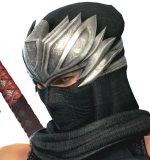
Ryu Hayabusa
When Team Ninja were busy designing lots of ninjas for their first game, they found one master of the trade already in Tecmo’s catalog – Ryu from Ninja Gaiden. In the Dead or Alive series, he is usually referred to by his last name. The Hayabusa brand Ninjutsu involves several breakdance-like moves and teleport tricks.
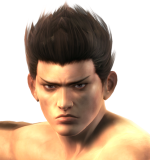
Jann Lee
Fighting game cliché #1: the Bruce Lee ripoff (Mortal Kombat‘s Liu Kang, Street Fighter‘s Fei Long, Tekken‘s Marshall Law). His ending in Dead or Alive 4 shows him as an underprivileged boy looking up to a martial arts movie legend; now who could that be? A practitioner of Jeet Kune Do, he has hard-hitting, far-flinging moves, accompanied by Bruce Lee’s trademark high-pitched screams.
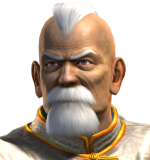
Gen Fu
Fighting game cliché #2: the sluggish old man character no one ever really uses (Jubei from Fatal Fury 2, Shun Di from Virtua Fighter 2, Gen from Street Fighter). From Dead or Alive 4 onwards, he officially does not take part in the tournaments any more, but remains as an unlockable bonus character.
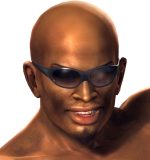
Zack
The Dennis Rodman lookalike is a self-taught Muay Thai kickboxer looking for fame, money and women. Owner of islands in the Xtreme games, he eventually becomes Helena’s organizer for the DOA Tournament. Enjoys groundhogs, mansierres and weird shiny alien costumes. It appears he was first conceived as a ripoff of Street Fighter‘s Adon before getting a redesign that for once doesn’t match the cliché associated with his fighting style.
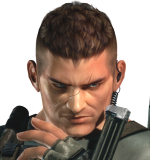
Bayman
A mercenary with a stupid name and a goofy red hat in his first costume. His combat style is Russian Sambo, which provides him with a lot of mean grappling combinations and his opponents with a lot of broken bones (or at least it would in real life). He was the first contestant ever taken out of the series, as Dead or Alive 2 replaced him with the similar Leon. He returned as an unlockable character in later revisions, and in full swing for Dead or Alive 3.
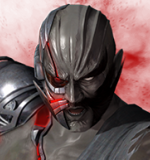
Raidou
The boss of the first game, who combines moves of the other characters with a few of his own. He is Shiden’s brother but was driven out from the Mugen-Tenshin clan, mostly for being an evil maniac. It is suggested that he raped Kasumi’s mother and thus fathered Ayane. He is supposed to be killed after the first tournament, but is playable as a cyborg in Dead or Alive 5 Last Round.
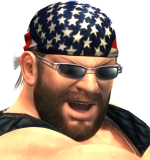
Bass Armstrong
An enormous wrestler who looks a lot like Hulk Hogan, and as such of course sports many large showy grabs and throws. He’s Tina’s dad and much like many old-fashioned fathers with daughters, he is a bit of a helicopter parent, unsuccessfully trying to prevent her many career choices in the spotlight.
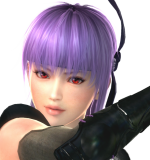
Ayane
The purple haired mean girl introduced as secret character in the PlayStation game. Her fighting style started out similar to Kasumi’s, but became embellished with unique, often freakishly acrobatic moves in Dead or Live 2. She is Kasumi’s half-sister and nemesis. When Kasumi’s brother Hayate returns to assume his position as the leader of the Mugen Tenshin clan, she becomes his right hand woman.
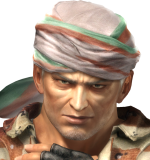
Leon
Fights almost the same as Bayman, although later games made the two a bit more distinct. He appears first in Dead or Alive 2 with a silly turban, but puts on a Hollywood executive style ponytail and glasses to kick some ass in DOA3. Like Gen Fu, he is turned into a non-canon bonus character for most games afterwards.
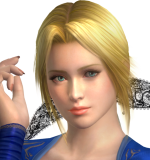
Helena
After her father is murdered by Bayman, Helena becomes the de-facto leader of DOATEC, but also personally takes part in the tournaments and follows in her (also assassinated) mother’s footsteps as an opera singer. Her martial arts style, Pi Gua Quan, is not often seen in fighting games, which relies on long-hauling circular movements to gain momentum.
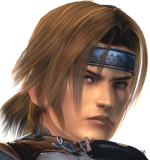
Ein / Hayate
Appearing as Ein in Dead or Alive 2 (it’s German for “one”), he’s really Kasumi’s brother with amnesia, after being subjected to DOATEC experiments. As long as he doesn’t remember his past, he adopts Karate as his fighting style. He regains his memory and name in Dead or Alive 3, along with an awesome ninja outfit. Some of his costumes make him appear suspiciously like a wish-fulfillment author insert for Itagaki.
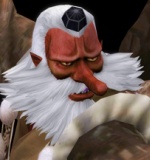
Gohyakumine Bankotsu-bo (Tengu)
A criminal escaped from the Tengu realm. He’s the first boss character to recur in the series, as he’s not only the boss in Dead or Alive 2, but also a hidden character in the fourth episode and Dimensions. He can throw around his opponents single-handedly, summon storms and – in Dead or Alive 2 Ultimate – change the seasons in his own stage at will.
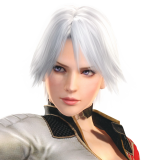
Christie
An icy haired assassin first introduced in the third episode, but Dead or Alive Dimensions retcons her as Donovan’s henchwoman since the events of the very first tournament. Her fighting style is She Quan, “Snake Fist”, so her punches imitate the movements of a snake darting forwards to catch its prey. She usually ends up being the star of the most raunchy scenes in the games.
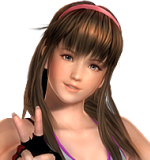
Hitomi
A German/Japanese fighter with a baby face and adorable pink headband, who trains karate at her father’s dojo. It was there where Ein/Hayate ended up after losing his memories and acquired his karate skills, and the two keep having awkward encounters later in the series.
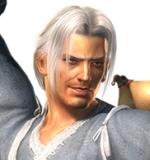
Brad Wong
Relive your memories of the Drunken Master movies with this guy who likes to hit the sauce. He is sent out by his master to search for a mystical wine called “Genra” – funny coincidence that the big bad of Dead or Alive 3 carries the same name.
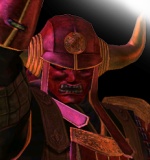
Omega / Genra
Formerly Ayane’s foster-father, Genra has been turned into a killing machine by DOATEC experiments. He is the boss enemy in the third tournament and fought in a strange, very frustrating setup. Becomes playable in Dimensions, where he retains his ability to spawn a lance of fire or fling lightning and fireballs at his opponents, making him the only character in the game who has access to projectiles.
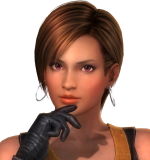
Lisa Hamilton / La Mariposa
A sophisticated city girl who was initially introduced in Xtreme Beach Volleyball. Shows up as a masked lucha libre wrestler in Dead or Alive 4 with all the flashy grabs and throws to go with it. While she is good friends with Tina, she is revealed as an evil-ish DOATEC scientist in the story of Dimensions.
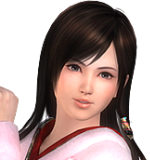
Kokoro
A geisha-in-training, with long, gorgeous flowing hair (which causes a lot of clipping errors) and more-or-less traditional Japanese outfits. Dead or Alive 5 reveals that she is Fame Douglas’ illegitimate child with one of his many mistresses. Fights using Ba Ji Quan, which is best known among fighting game players as the style of Virtua Fighter‘s Akira Yuki.
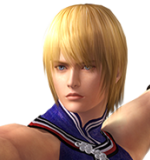
Eliot
A young pretty boy who’s been trained by Gen Fu, and takes his place in the standard roster in Dead or Alive 4. His fighting style of choice, Xing Yi Quan, is very different and more delicate than his master’s.
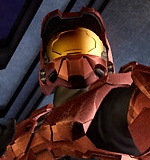
Spartan-458 / Nicole
As a result of Itagaki’s friendship with Microsoft, Dead or Alive 4 got this Halo tie-in character, together with an adequate stage in a spaceship hangar. Since she comes from a Microsoft IP, it doesn’t surprise that she’s the only character who doesn’t reappear in any following games.
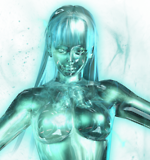
ALPHA-152
DOATEC’s ultimate weapon for Dead or Alive 4 is yet another clone of Kasumi – only this one has a T-1000 style skin and is extremely fast and wicked and doesn’t appear to be subject to the laws of gravity. She’s also technically nude.
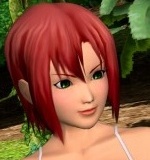
Rio
Rio is originally the face of Tecmo’s mobile BlackJack games, so it’s only natural that she works at the casino in Dead or Alive Paradise. She can be unlocked as a playable character too, but doesn’t appear in any other Dead or Alive titles so far.
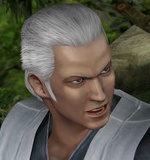
Shiden
Kasumi’s and Hayate’s father and current leader of the Mugen-Tenshin ninja clan for the early episodes in Dimensions. He appears as a special boss in some of the modes in that game, but is only playable via a secret code.
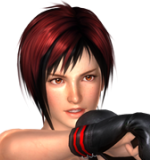
Mila
The Mila Jovovich ripoff and mixed martial artist is one of the two completely new combatants in vanilla Dead or Alive 5. Many of her moves come from boxing and kickboxing, but she also has a lot of grapple combinations on the ground. She also works as a bartender in one of the two only bars every legendary fighter in the world seems to frequent, and is a total Bass Armstrong fanboy.
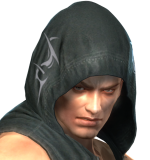
Rig
It took the series quite a while to introduce its first Taekwondo fighter. He is called Rig because he was raised on an oil rig, where he now serves as foreman and all around good dude – or so it seems. But the moment he steals evil Goh’s sleeveless hoodie from Virtua Fighter 4, it becomes clear that he holds a dark secret, especially since he has no memory of his origin.
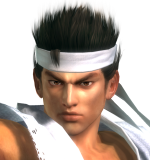
Akira Yuki
Dead or Alive 5 features several guest fighters from Sega’s Virtua Fighter. This of course includes series figurehead Akira Yuki. His fighting style is the difficult to master but effective Ba Ji Quan.
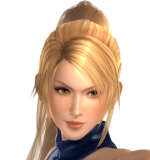
Sarah Bryant
Mixed martial artist, also from Virtua Fighter. Unlike Mila, her moves mostly originate in Eastern disciplines like Taekwondo and Karate.
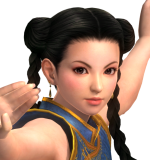
Pai Chan
The third Virtua Fighter guest character, who fights using Mi Zong Yi. It is related to Tai Chi Quan and seems sufficiently similar to the layman, although Pai Chan moves faster and relies more heavily on deceptive movements than Lei Fang.
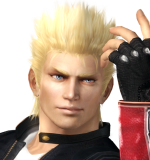
Jacky Bryant
He is Sarah Bryant’s brother, which of course makes him another Virtua Fighter character. Unlike the others, he didn’t enter Tecmo’s series before Dead or Alive 5 Ultimate. It may seem redundant to have Jeet Kune Do fighters in one game, but he is much less of a Bruce Lee clone than Jann Lee and relies on fluid combinations more than fierce singular strikes with long recovery times.
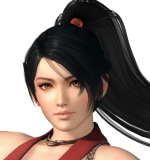
Momiji
Because four ninjas weren’t enough (or six if you count the Kasumi clones), Dead or Alive 5 Ultimate also introduces Ryu’s fellow clan member from the Ninja Gaiden series. At this rate the roster’s ninja ratio seriously rivals Mortal Kombat.
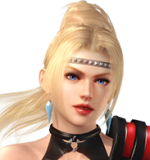
Rachel
Another visitor from Ninja Gaiden, who unfortunately forgot her giant head-smashing warhammer. Her hand-to-hand combat is just some generic, nondescript style without any notable peculiarities.
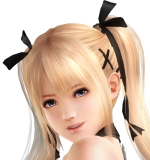
Marie Rose
Even though she is 18 years old, her design is obvious pandering to Lolita fetishes (and possibly Team Ninja giving the finger to her home country Sweden, where there was a controversy about the underage characters). Her fighting style is Russian Systema. She can dodge and get around the arena quickly, but her attacks don’t deal much damage.
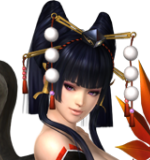
Nyotengu
You know it’s a Team Ninja game when a male Tengu is a grotesque, long-nosed monstrosity, but a female Tengu just another supermodel with wings. Nevertheless she sports the same kind of superhuman strength attacks and flying moves as her male counterpart. Also she gets a gimpsuit with a long nose for a costume.
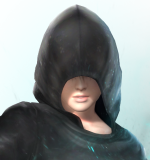
Phase 4
In Team Ninja’s never-ending quest to find the most boring concept for a fighting game boss, the penultimate opponent in Dead or Alive 5 is just another Kasumi clone, with a more conservative appearance and fighting style than ALPHA-152 even. In the story she eventually learns to morph into other ninjas, but that skill is missing from the playable version added to Ultimate, leaving her ability to teleport cancel out of most attacks as her main shtick.
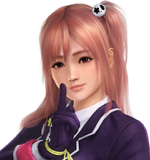
Honoka
It’s a tough competition, but Honoka might be the silliest character in the series yet. Being a schoolgirl who taught herself to fight by copying techniques of famous martial artists, her incoherent moveset stands in no relation to her size or physique. Watching her pull off the moves of a 300-pounds wrestler is just ridiculous. She also has the highest breast-to-height ratio, which Team Ninja just had to underline by making her costumes literally cow-themed.
Non-Playable Characters
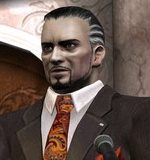
Fame Douglas
Helena’s father, the original president of DOATEC and host of the first Dead or Alive Tournament, is assassinated immediately afterwards. Like all of the supporting cast, he never appeared on-screen before Dead or Alive Dimensions.
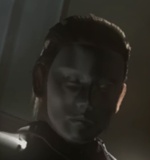
Victor Donovan
The mysterious scientist who plotted Fame Douglas’ assassination and is trying to take over DOATEC ever since. Even Dimensions always goes through the pain of showing him in angles that conceal his face, even though it turns out that he was wearing a mask all along, anyway.
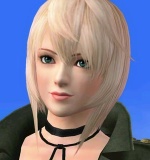
Irene
Ryu Hayabusa’s CIA partner from the classic Ninja Gaiden trilogy was briefly mentioned in his backstory for the very first Dead or Alive, but dropped afterwards. Only Dimensions brings her back in full swing – and with blond hair.
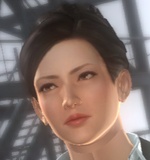
Miyako
One of Fame Douglas’ mistresses and Kokoro’s mother. She appears briefly in Kokoro’s ending in Dead or Alive 4and gets a presumably more involved role as possibly conspiring leader of DOATEC Japan in Dead or Alive 5, although her screen time is still limited to a few seconds.
